
Worldcarblog.com
Customers frustrated: They have to wait up to 30 months for new models to be delivered
While automakers say the delays can be attributed to ongoing chip shortages and overall growth in demand for new vehicles, many buyers believe the Korean automaker is prioritizing overseas markets due to the depreciation of the Korean currency against the US dollar.
Some buyers of Hyundai, Kia and Genesis cars have been told they will have to wait up to two and a half years before the new vehicle they ordered is delivered, the Korea Times reports.
Indeed, the local car trading platform revealed that Korean buyers of the 26 models made by the listed automakers will have to wait up to 30 months for their car, compared to "just" 11 months of waiting a year earlier.
"I have to wait two and a half years to buy a Genesis or any SUV made by Hyundai or Kia? I don't understand," said one customer on a local forum.
"The delay was only seven months last year. Why don't they make them quickly?"
As stated, the compact model Kia K3 and family sedan K5 are waiting three to five months, and up to 8 and a half months for selected versions of the model K5, large sedan K8 and SUV Sorento Hybrid.
Meanwhile, buyers of the Hyundai Avante, Sonata, Grandeur and Santa Fe models will have to wait between six and 20 months before picking up their keys.
A local company official denied claims that overseas customers were a priority.
"Not only Korean consumers, but also overseas consumers have to wait for the vehicle to be delivered," he said.
"The claim that we prioritize foreign consumers at the expense of local ones is simply untrue. Whether it's electric vehicles (EVs) or hybrids, the latest models need the latest chips and parts, which can take time to get. We'll do our best to make it as soon as possible respond to the growing demand for our vehicles."
Shameless copy: Check out the Chinese electric Range Rover that costs 2,700 euros
We are already used to cheap car copies from China, but the latest model offered on Alibaba has "stepped up the game". For only 2,710 euros, you get a not-so-faithful copy of the Range Rover, in a much smaller package with a range of 200 kilometers.
Copies of famous cars coming from China are not rare. A good number of companies from the most populous country in the world have based their products on stealing the designs of well-known brands.
The latest victim of plagiarism is the Range Rover. The Chinese company Sea Biscuit has offered a model on Alibaba that will attract a lot of attention, mostly from the British company's lawyers because it is an obvious design theft. This car has a starting price of €2,710, which is less than most things on the accessories list of a real Range Rover.
For this money, which does not include transportation costs, customers are offered a fully electric microcar with an electric motor that develops 68 hp, while the maximum speed is 50 km/h. The power is transmitted to the rear wheels, and after 10 hours of charging at a classic, domestic outlet, this copy of the Range Rover can travel a maximum of 200 kilometers.

Of course, they did not copy the quality of the interior from the British manufacturer.
As Auto Klub writes, there are cheap plastics everywhere, while the seats are made of fake leather. However, there are two miniature screens and a socket for charging a mobile phone, which add a bit of luxury to the interior.
It should be noted that a discount is also available for larger quantities, so in case the customer orders more than 100 copies, the price drops to only 2,000 euros.
2023 Volkswagen Taos
2023 volkswagen taos suv front parked on a desert track
Subcompact SUVs feed a hunger for space, affordability, and a certain sense of belonging—since almost everyone drives an SUV these days. Among 20 other competitors, the Volkswagen Taos quenches an additional, more recent consumer craving for parsimonious fuel economy. Available in front- or all-wheel drive, every Taos hums along getting exemplary real-world fuel mileage thanks to a stingy, 158-hp 1.5-liter turbocharged four-cylinder engine. The Taos doesn’t offer a hitch to tow with, so we’d suggest moving up to the larger Tiguan SUV for that, but there’s plenty of cargo space inside, even with the rear seats in use, to easily handle grocery duty. It’s a close fight among the best in this class, so the Tiguan’s low starting price and capacious cockpit make it a tempting choice among others such as the Kia Seltos and Chevrolet Trailblazer. Beating its EPA-estimate by 4 mpg, an all-wheel-drive Taos SEL we tested managed an awesome 40 mpg during our 200-mile, 75-mph highway fuel-economy test loop. Copious amounts of interior plastic help keep the Taos’ price down while making the more richly-appointed Mazda CX-30 cabin feel like a miniature luxury condo in comparison with the VW.
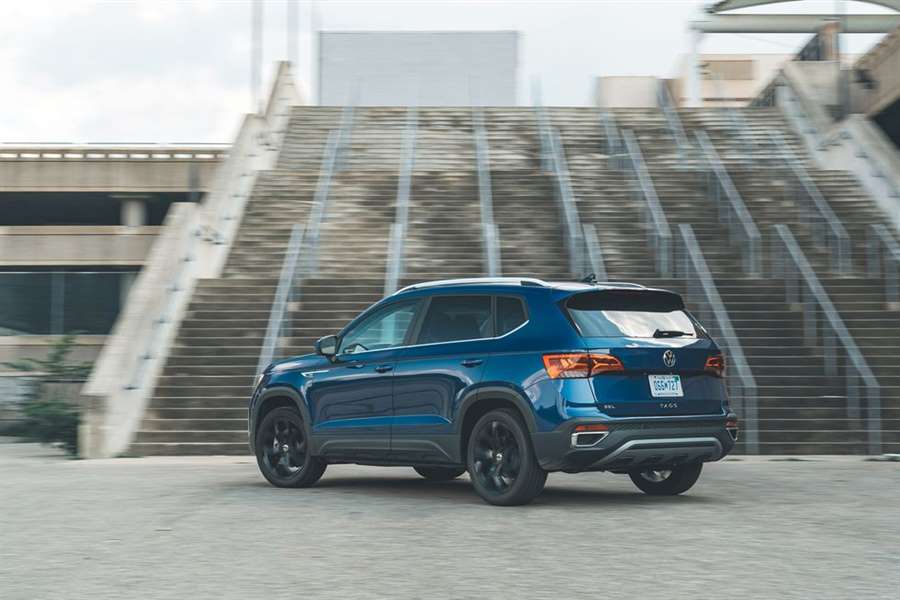
Volkswagen Taos: What's New for 2023?
VW’s smallest crossover doesn’t undergo much change for 2023, but it does receive a few equipment enhancements. Volkswagen adds driver assistance features such as forward collision warning with automatic emergency braking and pedestrian monitoring, blind spot monitor, and rear traffic alert as standard equipment across all trims. The base S gets 18-inch wheels, instead of 17-inchers, on all-wheel-drive models. Lastly, the SEL now get a fancy panoramic sunroof as standard equipment.
We recommend the mid-level SE model because it provides the best value. It comes standard with 18-inch wheels, blind-spot monitoring, heated front seats, remote start, and wireless charging. We'd add all-wheel drive for an extra $1450, largely because it replaces the front-drive model's rear suspension with a more sophisticated independent unit. We'd also opt for the IQ.Drive and SE Convenience packages that add adaptive cruise control, automatic high-beams, a heated steering wheel, lane-keeping assist, and rain-sensing windshield wipers.
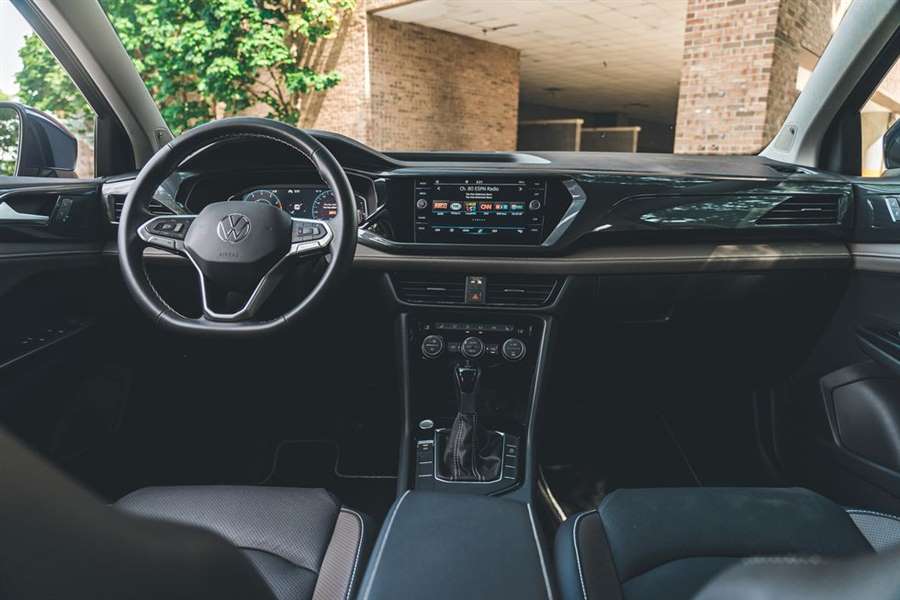
Volkswagen Taos: Engine, Transmission, and Performance
The Taos is powered by VW's new turbocharged 1.5-liter four-cylinder engine. It makes 158 horsepower and 184 pound-feet of torque. Front-drive versions feature an eight-speed automatic transmission, and all-wheel-drive models have a seven-speed dual-clutch automatic. The front-drive and all-wheel-drive Taos also have different rear suspensions, with the former using a torsion-beam setup and the latter using a more sophisticated multilink design. A set of 17-inch wheels are standard, but 18- and 19-inchers are also available. We appreciated the engine's low-speed thrust, the eight-speed automatic's unobtrusive operation, and the suspension's composure on even roads during our time with one.
Volkswagen Taos: Fuel Economy and Real-World MPG
The front-drive Taos is rated at 28 mpg in the city and 36 mpg on the highway, and the all-wheel-drive model is rated at 25 mpg city and 32 highway. We tested a front-drive Taos on our 75-mph highway fuel-economy route, and it earned an impressive 40 mpg, beating its EPA estimate. For more information about the Taos's fuel economy, visit the EPA's website.
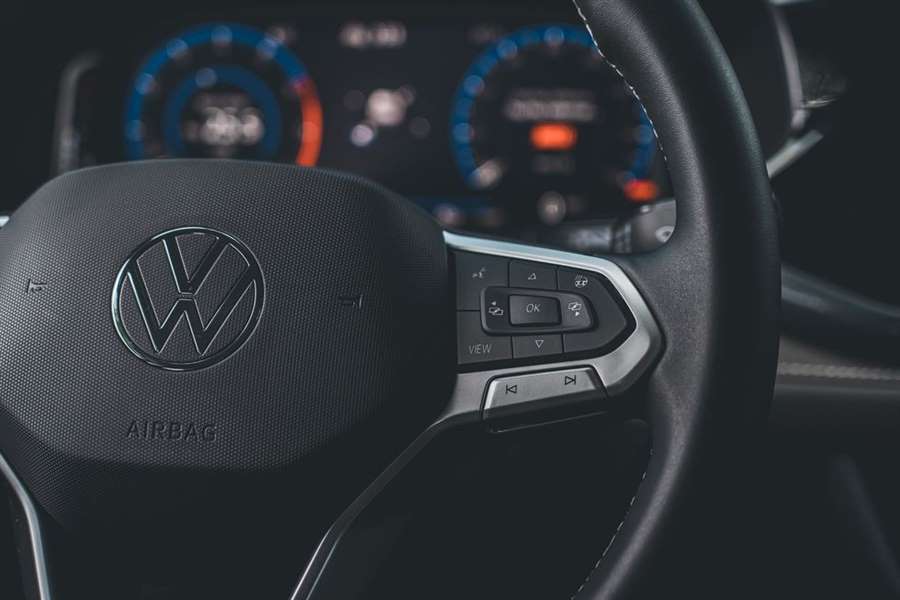
Volkswagen Taos: Interior, Comfort, and Cargo
Inside, there's nothing overtly special about the Taos. The design and materials mimic the modern aesthetic found on other VW models. A fully digital gauge cluster is fitted to every dashboard and the standard two-tone seats are covered in cloth. However, leatherette and leather upholstery are both available, too. There's no shortage of popular options, either. The Taos cabin can be equipped with customizable ambient lighting, an eight-way power driver's seat, dual-zone climate control, a heated steering wheel, heated and ventilated front seats, and a panoramic sunroof. The Taos boasts 37.9 inches of rear-seat legroom, which is only 0.8 inch less than the two-row Tiguan. The Taos also has 28 cubic feet of cargo space behind the rear seatbacks and 66 cubes with them folded flat.
Volkswagen Taos: Infotainment and Connectivity
Every Taos features a slick-looking infotainment system with a subscription-based Wi-Fi hotspot. A 6.5-inch touchscreen is standard, and an 8.0-inch version is optional. The system can also be equipped with built-in navigation, an eight-speaker BeatsAudio stereo, SiriusXM satellite radio, and wireless smartphone charging.
Volkswagen Taos: Safety and Driver-Assistance Features
The smallest VW crossover is available with a variety of driver-assistance technology, too, including forward-collision warning and automated emergency braking. For more information about the Taos's crash-test results, visit the National Highway Traffic Safety Administration (NHTSA) and Insurance Institute for Highway Safety (IIHS) websites. Key safety features include:
- Standard blind-spot monitoring and rear cross-traffic alert
- Standard forward collision warning and automatic emergency braking
- Standard rear traffic alert
Volkswagen Taos: Warranty and Maintenance Coverage
Volkswagen provides an above-average limited warranty and below-average powertrain coverage. However, the company does include complimentary scheduled maintenance that aligns with Toyota.
Limited warranty covers four years or 50,000 miles
Powertrain warranty covers four years or 50,000 miles
Complimentary scheduled maintenance is covered for two years or 20,000 miles
SOurce: caranddriver.com
These are the best-selling electric cars in the world
Global sales of electric cars continue to grow at record numbers.
According to EV-Volumes, 847,590 new vehicles were registered in August, which is 60 percent more than in the same period in 2021.
Globally, the market share increased to 15 percent (11 percent fully electric and four percent plug-in hybrids). By the end of August, a total of more than 5.7 million new passenger electric cars were registered, which means that even the unrealistic limit of 10 million units could be exceeded by the end of the year. For comparison, in 2021, 6.5 million of them were registered.
As for the best-selling models, the Tesla Model Y is at the top, and among the ten most popular are the Tesla Model 3, Volkswagen ID.4 and as many as seven Chinese cars, according to Jutarnji.hr.
As you will see in the table, the most represented brand is BYD, which is among the largest manufacturers of electric cars in the world. This year they entered the European market (Norway, Sweden, Denmark, the Netherlands, Belgium, Luxembourg and Germany), recently signed a contract with the German rent-a-car company Sixt on the delivery of 100,000 electric cars, and in the first half of the year they have already delivered 640,000 vehicles .
They do not hide their goal, they want to become the best-selling brand of electric cars in the world.
Top 20 electric models in 2022:
1) Tesla Model Y - 409,378
2) Wuling Hong Guang MINI EV - 278,838
3) Tesla Model 3 - 268,157
4) BYD Song - 239,739
5) BYD Qin Plus - 198,326
6) BYD Han - 148,512
7) BYD Dolphin - 102,620
8) Volkswagen ID.4 - 99,880
9) BYD Yuan Plus - 92,776
10) BYD Tang - 79,211
11) Li Xiang One - 75,397
12) Chery QQ Ice Cream - 72,094
13) Chery eQ1 - 68,153
14) GAC Aion Y - 67,793
15) Hyundai Ioniq 5 - 67,781
16) Changan Benny EV - 64,553
17) Hozon Neta V - 59,637
18) GAC Aion S - 58,471
19) Kia EV6 - 54,896
20) Ford Mustang Mach-E - 51,447
Mercedes presented the redesigned A class PHOTO/VIDEO
As expected, the visual changes compared to the current model are minimal.
Halfway through its life cycle, Mercedes refreshed the entire A-Class range, including the sedan version. Cosmetic changes are minor and include slightly revised headlights with optional LED lights along with a redesigned radiator grille with a texture made up of miniature three-pointed stars.
At the rear, the German premium brand has installed a new diffuser and standard LED stop lights. Four new wheel design options have also been added, and the dimensions of the alloy wheels go up to a maximum of 19 inches.
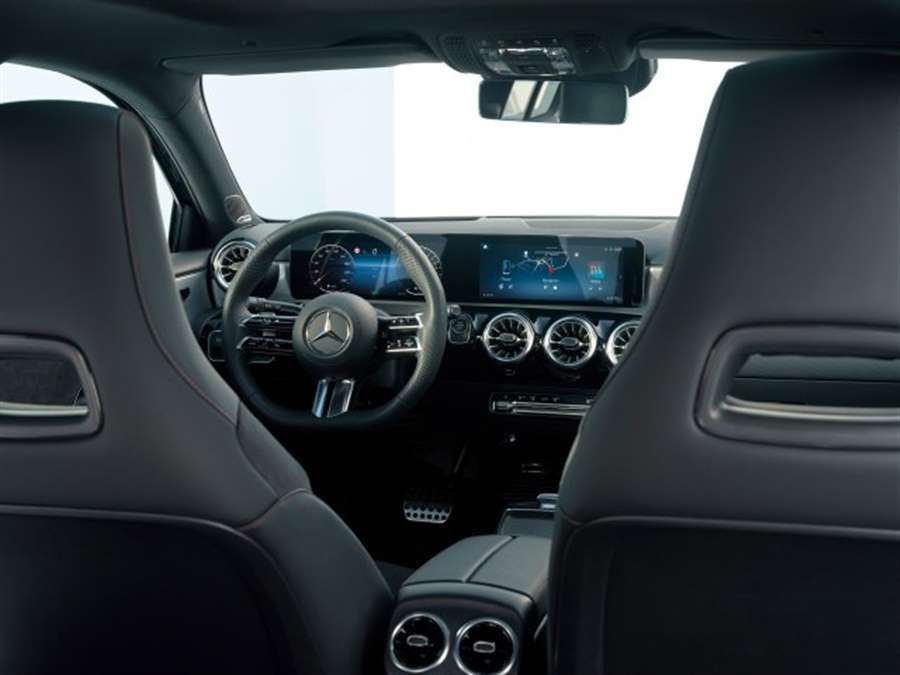
In the passenger cabin, the updated steering wheel is wrapped in Nappa leather as standard, while the center console has received some minor revisions.
The latest MBUX multimedia system continues to use two digital screens as standard. The smaller, 7-inch one is placed in front of the driver and serves as an instrument panel, while the right one, sensitive to touch, has a diagonal of 10.25 inches.
In addition, a configuration with two 10.25-inch displays is available as an option.
{vembed Y=MFXtZgW5w70}
As for the engine, the petrols have received the "mild" hybrid treatment and are paired with a seven-speed or eight-speed dual-clutch automatic transmission as standard.
Electric 48-volt technology provides an additional 13 horsepower (10 kW) of power.
In the plug-in hybrid version, the electric motor now delivers an additional 7 hp (5 kW), so the total electric power is now 109 hp (80 kW).

Owners can charge the battery with alternating current on a charger of up to 11 kW or direct current up to 22 kW. In the case of the latter, it takes 25 minutes to charge the battery from 10 to 80 percent capacity.
Mercedes also presented the AMG A35 versions in hatchback and sedan formats, while the A45 S remains available only as a 5-door model.
The weaker of the two performance models gets stylish ones that visually bring it closer to the top range. In addition, the AMG A35 gets a "light" hybrid system and switches to an eight-speed DCT, instead of the previously used seven-speed automatic.
Power remains unchanged, 306 hp (225 kW), with 400 Nm of torque.
The Mercedes-AMG A45 S gets a Street Style edition with an assortment of visual enhancements. The Limited Edition is painted in Mountain Gray Magno and features an aero kit as well as new 19-inch matte black wheels with red brake calipers.
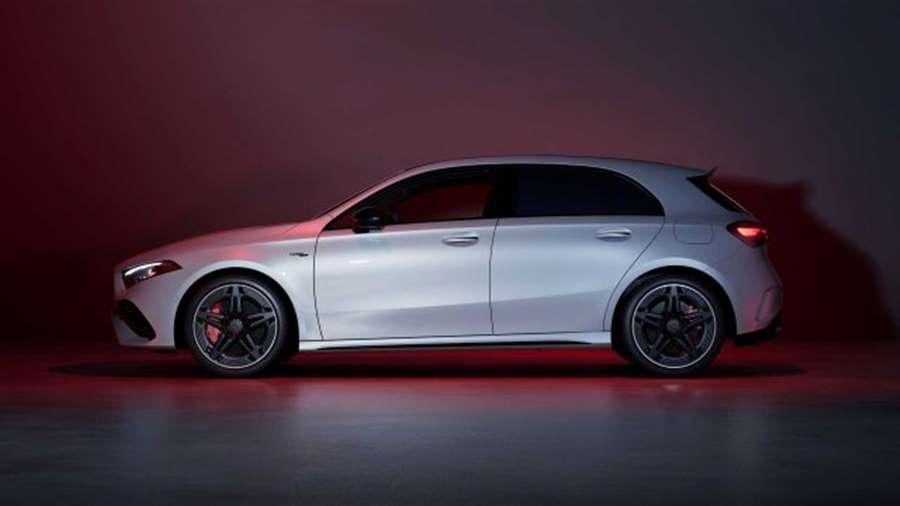
You'll also notice retro decals on the body, along with bright orange accents inside, along with aluminum trim.
The Mercedes A 45 S still has 422 hp (310 kW) and 500 Nm, but it is no longer the most powerful four-cylinder engine installed in a production car.
Placed longitudinally in the new AMG C63, the same M139 generates an incredible 476 hp (350 kW) and 545 Nm. The smaller version of the four-cylinder still allows the AMG A45 S to reach 100 km/h in 3.9 seconds and a top speed of 270 km/h.
It will be interesting to see if there are any plans to put a more powerful engine in the compact car, but one should not hope too much for that.
The return of the legend: the new Renault 4 debuts in Paris
The modern version of the famous car will premiere on October 17.
Thirty years after the end of production of the original "four", the French manufacturer will present its new take on the Renault 4 at the 2022 Paris Motor Show.
A team of designers working under the baton of Gilles Vidal, Renault's vice president of design, created a modern version of the cult model that left its mark on the automotive industry of the second half of the 20th century.
Based on the first "teasers", it can be concluded that the new "four" will be a crossover vehicle, and it is expected to have an electric drive.
As a reminder, the original Renault 4 was produced from 1961 to 1993, and during that time a total of over 8 million of these vehicles were sold.
The successor will certainly have a retro design, with elements of futuristic style, while everything else, including the price, will be a new story.
New Renault Megane E-Tech 2022 review
The Renault Megane returns as an all-electric SUV, and is all the better for it
Verdict
Renault has moved with the times with the new Megane, and the switch to full-electric power makes it one of the most convincing models to wear the badge since its debut 27 years ago. It’s spacious, accomplished to drive and has the best in-car tech in its class. There are some minor flaws – improved efficiency would be welcome – but it has fewer than most rivals. If you’re looking for a family EV, the Megane must be on your shortlist.
The Renault Megane is one of those cars that have become part of the establishment within the automotive landscape. The name is among the most recognisable in the family car class, having been on our roads since 1995; only the Volkswagen Golf, Honda Civic, Toyota Corolla and Vauxhall Astra are longer-serving badges in this segment.

It’s a big deal, then, when a new Megane comes out. It’s an even bigger deal when the car that Renault releases represents such a radical departure from what went before it. And despite what you might think when you see the dramatic new crossover’s proportions, we’re not talking about the design. That’s because the most significant change here is that the fifth-generation Megane is all-electric.
Under the skin, it uses the CMF-EV platform, which is the same tech as our Car of The Year, the Nissan Ariya. However, the Megane uses a different motor, made in France by Renault, which in UK-spec models produces a healthy 217bhp. There are no rare earth metals in the motor, and when that’s combined with the 20kg of recycled material that’s used in every Megane – including plastic bottles for the seat upholstery – the car’s sustainability credentials are boosted.

Energy is supplied by a super-slim 60kWh battery, which results in a cabin space that’s similar to a Volkswagen ID.3’s. That means it’s acceptable, but still a little tight in the rear. At 440 litres, the deep boot is generous, although there is a load lip.
The interior feels miles ahead of the VW’s, though. Quality is a step up on its rival, but it’s the ergonomics that really set it apart. The Megane has proper physical controls for the climate functions, for a start.
One of the areas that Renault is most proud of is the Android Automotive-based infotainment system. It claims that the screen sharpness is class-leading, and that the system is as responsive to use as a smartphone. It’s a fair claim – touch response and loading times are excellent, while “Okay Google” voice commands can be used not only for route guidance, but also to adjust the drive modes and ambient lighting. This is one of the very best in-car systems on the market, and Renault says that there’s more to come, too; future over-the-air updates will bring further improvements and additional functionality.
The Megane is also impressive on the road. Refinement is its strongest point, with wind and road noise plus suspension knocks well isolated from the cabin. The Megane’s driving dynamics are above average for the class, but despite quick steering and a kerbweight that undercuts most rivals, it’s still a 1,636kg hatchback.

The car’s weakness is its low-speed ride. The chassis never quite settles over uneven surfaces, causing a constant fidget. It’s never harsh, though, and larger bumps are rounded off nicely. Performance is strong, too, with 0-62mph taking 7.5 seconds. Normal mode is best; in Sport the throttle response feels a little too sharp.
There are four levels of brake regeneration to choose from, which can be easily adjusted via steering wheel paddles. When energy recovery is operating, it automatically depresses the brake pedal. This is supposed to be clever, but in reality it feels odd.
A mix of twisty B-roads, motorways and some town driving resulted in efficiency of 3.7 miles per kWh on our test drive, and an estimated real-world range of around 230 miles, well short of the official 280-mile claim. However, if you mainly do urban driving, you can expect much better.
Renault is keeping the Megane line-up simple, with a single powertrain and three trim levels. Beyond the colour, there are no optional extras to add to any of them.
The range kicks off with the £35,995 Equilibre, which gets a 12.3-inch driver display, rear parking sensors and camera, a heated steering wheel, adaptive cruise, traffic sign recognition and USB-C ports. However, it misses out on the Google-based infotainment, which is standard on £38,495 Techno models. This trim also adds front parking sensors, wireless phone charging, blind-spot warning and active lane centring.
Launch Edition is the current range- topper and gets 20-inch wheels and a gold front bumper insert. Inside, there’s a digital rear-view mirror, a nine-speaker Harman Kardon audio system and a surround-view parking camera. At £39,995, it’s much less than a top-spec Cupra Born.
The main challenger for the Megane will be the MG4. It feels cheaper than the Megane in several areas, but costs less, so it’s easy to forgive these shortcomings – ironically something often noted about Renault’s budget brand, Dacia.
Source: autoexpress.co.uk

















